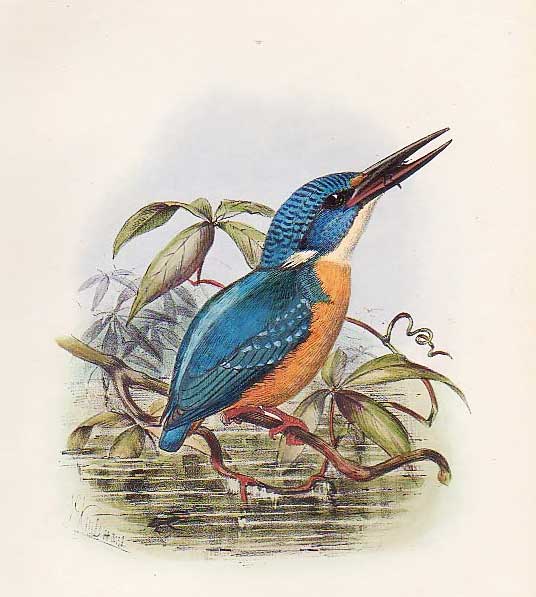
Alcedo meninting
Superregnum: Eukaryota
Cladus: Unikonta
Cladus: Opisthokonta
Cladus: Holozoa
Regnum: Animalia
Subregnum: Eumetazoa
Cladus: Bilateria
Cladus: Nephrozoa
Superphylum: Deuterostomia
Phylum: Chordata
Subphylum: Vertebrata
Infraphylum: Gnathostomata
Megaclassis: Osteichthyes
Cladus: Sarcopterygii
Cladus: Rhipidistia
Cladus: Tetrapodomorpha
Cladus: Eotetrapodiformes
Cladus: Elpistostegalia
Superclassis: Tetrapoda
Cladus: Reptiliomorpha
Cladus: Amniota
Classis: Reptilia
Cladus: Eureptilia
Cladus: Romeriida
Subclassis: Diapsida
Cladus: Sauria
Infraclassis: Archosauromorpha
Cladus: Crurotarsi
Divisio: Archosauria
Cladus: Avemetatarsalia
Cladus: Ornithodira
Subtaxon: Dinosauromorpha
Cladus: Dinosauriformes
Cladus: Dracohors
Cladus: Dinosauria
Ordo: Saurischia
Cladus: Eusaurischia
Subordo: Theropoda
Cladus: Neotheropoda
Cladus: Averostra
Cladus: Tetanurae
Cladus: Avetheropoda
Cladus: Coelurosauria
Cladus: Tyrannoraptora
Cladus: Maniraptoromorpha
Cladus: Maniraptoriformes
Cladus: Maniraptora
Cladus: Pennaraptora
Cladus: Paraves
Cladus: Eumaniraptora
Cladus: Avialae
Infraclassis: Aves
Cladus: Euavialae
Cladus: Avebrevicauda
Cladus: Pygostylia
Cladus: Ornithothoraces
Cladus: Ornithuromorpha
Cladus: Carinatae
Parvclassis: Neornithes
Cohors: Neognathae
Cladus: Neoaves
Ordo: Coraciiformes
Familia: Alcedinidae
Subfamilia: Alcedininae
Genus: Alcedo
Species: Alcedo meninting
Subspecies: A. m. amadoni - A. m. callima - A. m. coltarti - A. m. laubmanni - A. m. meninting - A. m. phillipsi - A. m. proxima - A. m. rufigaster - A. m. scintillans - A. m. subviridis - A. m. verreauxi
Name
Alcedo meninting Horsfield, 1821
References
Transactions of the Linnean Society of London (1) 13 p. 172
Vernacular names
čeština: Ledňáček modrohřbetý
English: Blue-eared Kingfisher
日本語: ルリカワセミ
Türkçe: Mavi kulaklı yalıçapkını
The blue-eared kingfisher (Alcedo meninting) is found in Asia, ranging across the Indian subcontinent and Southeast Asia. It is found mainly in dense shaded forests where it hunts in small streams. It is darker crowned, with darker rufous underparts and lacking the rufous ear stripe of the common kingfisher (Alcedo atthis) which is found in more open habitats. A number of subspecies have been described that differ in measurement and colour shade. Adult males have an all dark bill while females have a reddish lower mandible.
Taxonomy
The blue-eared kingfisher was described by the American naturalist Thomas Horsfield in 1821 and given its current binomial name Alcedo meninting.[2][3] The name Alcedo is the Latin word for a "kingfisher". The specific epithet meninting is the Javanese word for the species.[4] The blue-eared kingfisher is one of seven species in the genus Alcedo and is most closely related to Blyth's kingfisher (Alcedo hercules).[5][6]
Several plumage variations in the population that occur across its wide distribution range have been recognized as subspecies:[5]
A. m. coltarti Baker ECS, 1919 – Nepal, northeast India, northern Thailand and Indochina
A. m. phillipsi Baker ECS, 1927 – southwest India and Sri Lanka
A. m. scintillans Baker ECS, 1919 – southern Myanmar and Thailand
A. m. rufigastra Walden, 1873 – Andaman Islands
A. m. meninting Horsfield, 1821 – southern Malay Peninsula, Borneo, southern Philippines, Islands off the west coast of Sumatra, Java, Lombok, Sulawesi, Banggai and Sula Islands.
Some other subspecies such as verreauxii, callima, subviridis and proxima are not considered to be sufficiently distinct.
Blue-eared kingfisher (Male) from Guwahati, Assam
Description
Shaded forest streams are the usual habitat. A. m. phillipsi
This 16 centimetres (6.3 in) long kingfisher is almost identical to the common kingfisher (Alcedo atthis) but is distinguished by the blue ear coverts, darker and more intense cobalt-blue upperparts with richer rufous under parts. The juvenile blue-eared kingfisher has rufous ear-coverts as in the common kingfisher but it usually shows some mottling on the throat and upper breast which disappears when the bird reaches adulthood. Young birds have a reddish bill with whitish tips.[7][8]
Distribution and habitat
Measurements
The range of this species stretches from India in the west, eastwards across Nepal, Bhutan and Bangladesh, and further into Myanmar, Thailand, Cambodia, Vietnam and Malaysia. The usual habitat is pools or streams in dense evergreen forest and sometimes mangroves, situated under 1,000 metres (3,300 ft) of altitude.
Behaviour and ecology
The blue-eared kingfisher is largely resident within its range. They usually perch on branches overhanging densely shaded streams before diving below to capture prey that includes crustaceans, dragonfly larvae and fish. Other insects including grasshoppers and mantids have been recorded.[10]
The breeding season in India is mainly May to June in northern India and January in southwestern India. The nest is a metre long tunnel in the bank of a forest stream where about five to seven white near spherical eggs are laid.[7]
References
BirdLife International (2016). "Alcedo meninting". IUCN Red List of Threatened Species. 2016: e.T22683042A92974788. doi:10.2305/IUCN.UK.2016-3.RLTS.T22683042A92974788.en. Retrieved 12 November 2021.
Horsfield, Thomas (1821). "Systematic arrangement and description of birds from the island of Java". Transactions of the Linnean Society of London. Series 1. 13: 133–200 [172]. doi:10.1111/j.1095-8339.1821.tb00061.x.
Peters, James Lee, ed. (1945). Check-list of Birds of the World. Vol. 5. Cambridge, Massachusetts: Harvard University Press. pp. 173–174.
Jobling, James A. (2010). The Helm Dictionary of Scientific Bird Names. London: Christopher Helm. pp. 40, 250. ISBN 978-1-4081-2501-4.
Gill, Frank; Donsker, David, eds. (2017). "Rollers, ground rollers & kingfishers". World Bird List Version 7.3. International Ornithologists' Union. Retrieved 3 December 2017.
Andersen, M.J.; McCullough, J.M.; Mauck III, W.M.; Smith, B.T.; Moyle, R.G. (2017). "A phylogeny of kingfishers reveals an Indomalayan origin and elevated rates of diversification on oceanic islands". Journal of Biogeography. 45 (2): 1–13. doi:10.1111/jbi.13139.
Ali, S. & S.D. Ripley (1983). Handbook of the Birds of India and Pakistan. Volume 4 (2nd ed.). New Delhi: Oxford University Press. pp. 78–80.
Baker, ECS (1927). The Fauna of British India including Ceylon and Burma. Birds. Volume 4 (2nd ed.). London: Taylor and Francis. pp. 254–258.
Manuel, Canuto G. (1941). "Studies on Philippine kingfishers, II". The Philippine Journal of Science. 74: 367–382.
Becking, JH (1989). Henri Jacob Victor Sody, 1892-1959: His Life and Work. Brill Archive. p. 188.
Retrieved from "http://en.wikipedia.org/"
All text is available under the terms of the GNU Free Documentation License

